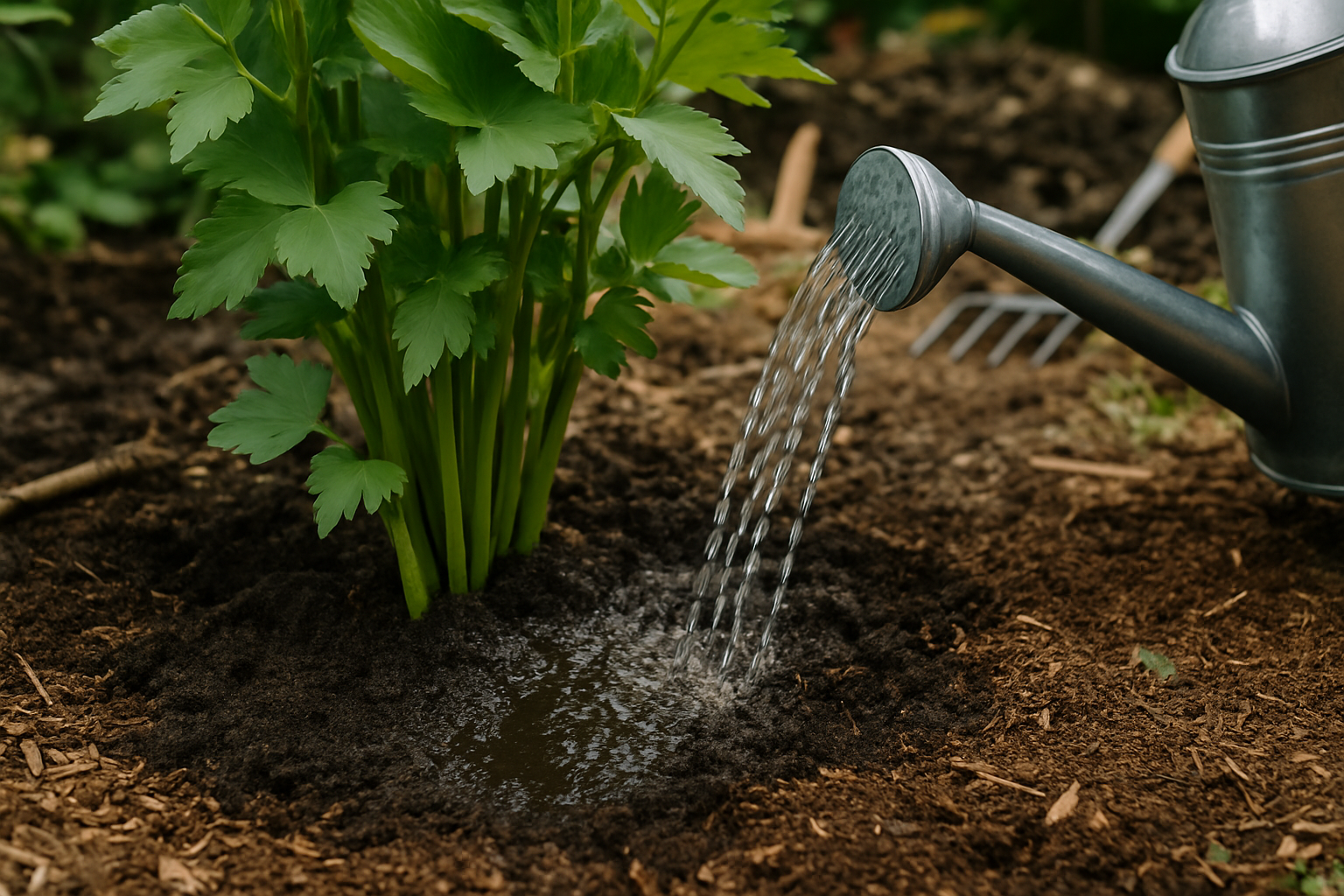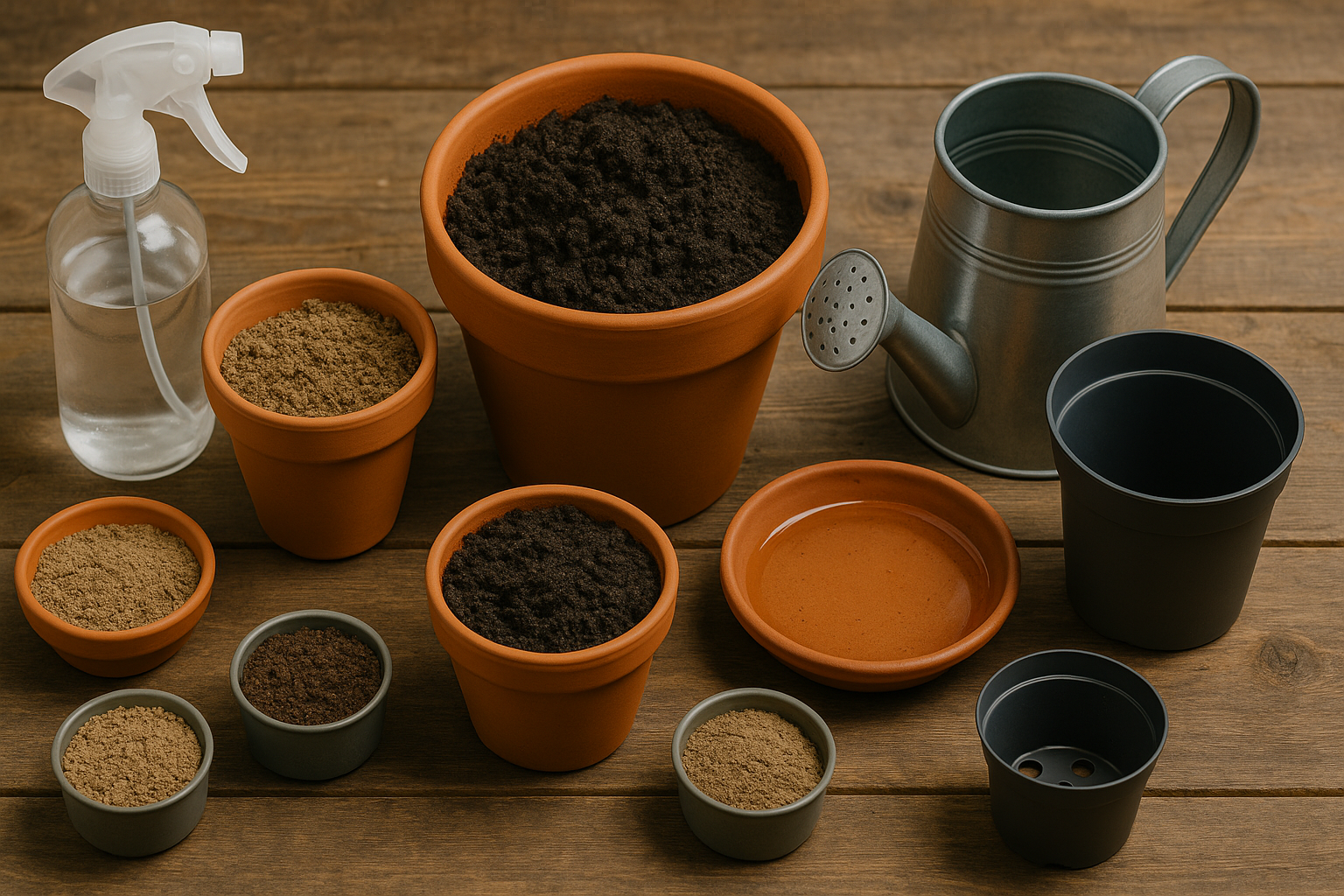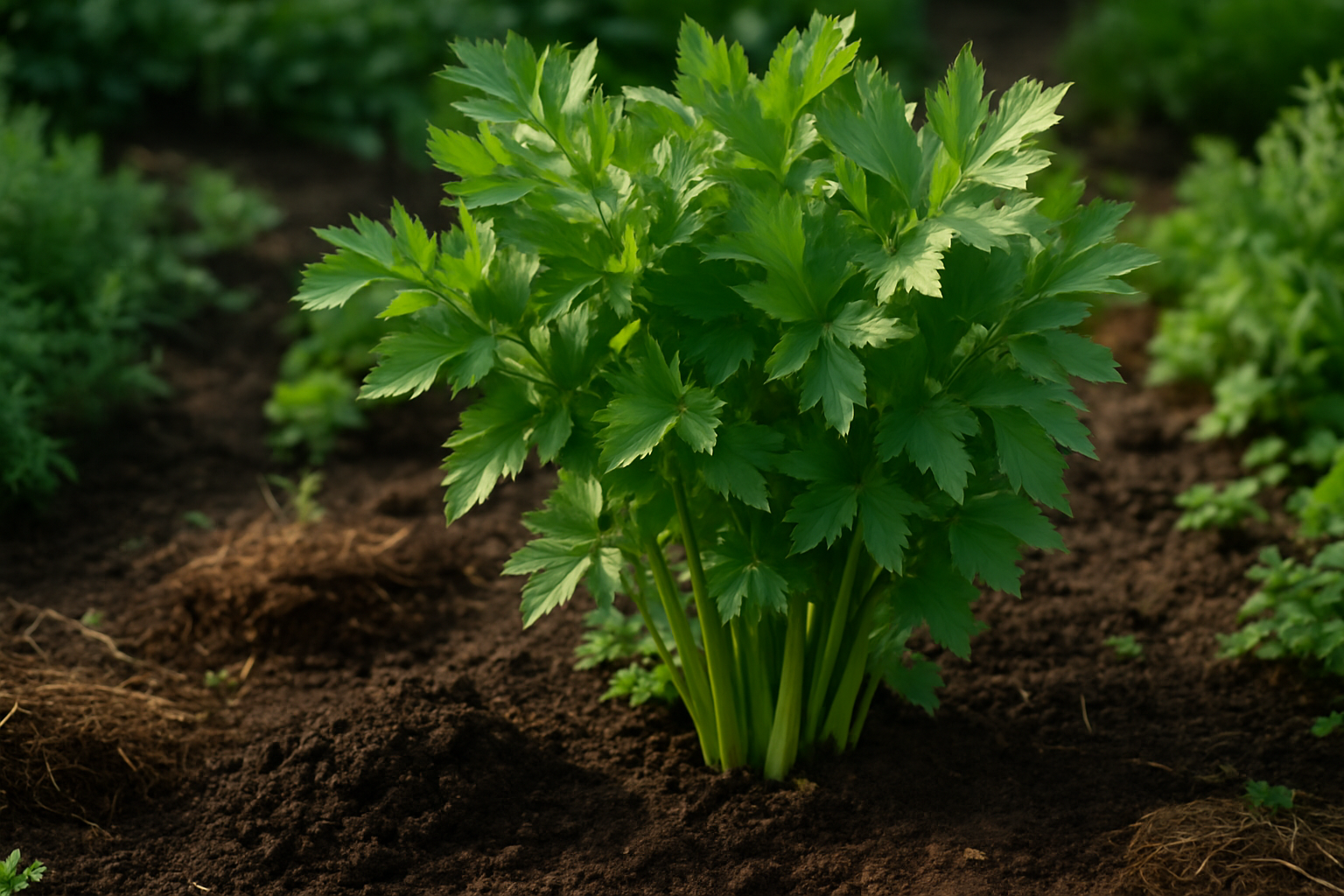Understanding Lovage’s Water Needs

Lovage is a tough, perennial herb known for thriving in a range of garden conditions, but it truly shines when planted in rich, well-draining soil with a steady supply of moisture. Unlike thirstier herbs like basil, which need consistently damp soil, or parsley, which prefers even moisture but can tolerate some dryness, lovage falls somewhere in between.
It tolerates short dry spells due to its deep roots but still grows best with regular watering—especially during hot or windy spells. The type of soil in your garden plays a big role: sandy soils may require more frequent watering since they drain quickly, whereas clay-based or loamy soils retain moisture longer, letting you stretch out the intervals.
Your local climate also matters; lovage in cooler, humid areas typically needs less water than in sunny, arid locations. Sun exposure and wind can also increase evaporation, making regular checks more crucial.
When lovage is getting established or is in an active growth spurt during spring or early summer, keep the soil consistently moist but not soggy; a deep watering once or twice a week is ideal. As the plant matures or if rainfall increases, you can reduce watering to once a week or even less.
No matter where you grow it, always let the top inch of soil dry out slightly before watering again—overwatering can lead to root rot or sluggish growth. Adapting your watering routine to the season, the plant’s size, and recent weather is the best way to keep lovage happy and lush all season long.
How Often Should You Water Lovage?
Established lovage plants are relatively low-maintenance when it comes to watering, but consistency is key to healthy growth and flavor. Generally, outdoor in-ground lovage thrives with about one inch of water per week, whether from rainfall or supplemental watering.
During rainy weeks, you might not need to water at all, but in hot or dry spells, check your plant more often and aim to water deeply once or twice a week to keep the soil evenly moist—not soggy.
Pot-grown lovage dries out faster than those planted in the ground, so plan to check soil moisture every few days, especially in warm weather. The top inch of soil should feel dry before you water again.
For both garden beds and containers, avoid watering on a set schedule without checking the soil first—overwatering leads to root rot and wilting just as easily as drought does. To keep it simple, stick your finger into the soil up to your first knuckle; if it feels dry at that depth, it’s time to water.
During winter, established outdoor lovage needs very little supplemental water unless you live in a region with dry winters. However, container plants kept indoors may still need light watering every couple of weeks.
Adapting your watering routine to the season and keeping a close eye on soil moisture is the best way to keep your lovage lush and productive all year long.
Signs Lovage Needs More or Less Water
Knowing whether your lovage needs more or less water can make all the difference in keeping your plant healthy and thriving. Signs of under-watering usually appear as wilted, drooping leaves that may start to yellow and feel dry to the touch. Over time, the stems might become brittle, and overall growth can stall.
On the other hand, over-watering is just as risky. Look out for soft, limp stems, blackened or mushy roots (if you inspect below the soil), and yellow or brown patches on the leaves. Sometimes, a musty smell in the soil can signal root rot is setting in.
To keep your watering routine on track, regularly check your plant’s health and soil moisture. Stick a finger into the top inch of soil: if it feels dry, it’s time to water; if it’s still cool and damp, wait another day or two. Soil moisture probes are great for more precise readings, especially in larger containers.
If you detect over-watering, let the soil dry out before watering again and improve drainage by using a pot with holes or adding sand. For under-watered lovage, give it a deep drink until water seeps from the drainage holes, and try to maintain a more consistent watering schedule moving forward.
Seasonal Watering Tips for Lovage
Adjusting your watering schedule for lovage throughout the year is essential for healthy growth and resilience.
Spring
As new shoots emerge, increase watering to keep the soil consistently moist, especially if rain is inconsistent.
Summer
Lovage needs extra attention during heat waves and dry spells—check the soil frequently, and water deeply once or twice a week so moisture reaches the roots. If rainfall is steady, cut back to prevent soggy soil. Applying a thick layer of mulch around the base in warmer months not only helps retain moisture but also keeps roots cool during hot weather.
Fall
As fall arrives and temperatures cool, gradually reduce watering as plant growth slows.
Winter
In winter, lovage enters dormancy: natural rainfall is usually enough, so only water if conditions are unusually dry or if the soil is parched. Overwatering during dormancy can lead to root rot, so err on the side of caution.
By tuning in to seasonal changes and weather patterns, you’ll provide lovage exactly what it needs—keeping it robust and flavorful all year long.
Soil, Drainage, and Other Care Factors
Healthy lovage starts with the right soil—well-drained and fertile earth helps prevent waterlogging, root rot, and stunted growth. If your garden soil stays soggy after rain, mixing in amendments like compost, coarse sand, or perlite can improve drainage and soil structure, making it easier for roots to access nutrients and oxygen.
For container-grown lovage, pay close attention to pot size and material; larger pots retain moisture more consistently, while terra cotta pots dry out faster than plastic ones. Always choose pots with drainage holes to prevent soggy roots. In the ground, heavy clay soil can be challenging, so consider using raised beds or adding organic matter to improve conditions.
Remember, watering is just one part of keeping lovage thriving—healthy growth also depends on sunlight, regular but moderate feeding, and removing dead or yellowing stems to improve airflow. By taking a holistic approach—managing soil quality, drainage, and overall plant care—you’ll set your lovage up for a long, productive season, whether it’s growing in a backyard patch or on a sunny balcony.
Common Watering Mistakes (and How to Avoid Them)

Many gardeners unknowingly undermine their lovage plants by making common watering mistakes. Shallow watering—where only the soil surface gets damp—forces roots to stay near the top, making plants less resilient to drought. Using cold water, especially from an outdoor tap, can shock roots, slowing growth or causing wilting. Inconsistent watering routines, such as flooding then neglecting your plants, stress lovage and may result in stunted or leggy growth. Overwatering seedlings is another frequent error: their delicate roots can easily rot in soggy soil.
To avoid these pitfalls, follow these tips:
- Water deeply so moisture reaches the root zone, encouraging roots to grow strong and deep.
- Use water that’s been left to sit until it reaches ambient temperature to prevent shocking plant systems.
- Set a regular schedule—checking the soil daily and watering when the top inch is dry works well.
- For young seedlings, use a spray bottle or gentle watering can to keep soil evenly moist but never saturated.
- As your lovage matures, tune into the weather and adjust frequency—water more in hot spells and less during cooler or rainy periods.
Observing plant health and soil moisture is your best guide for adapting your approach and growing thriving lovage year after year.
